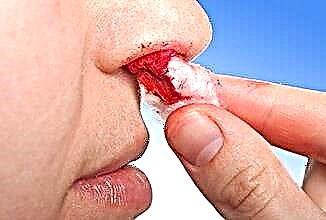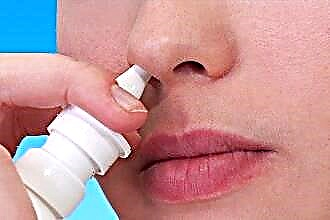For patients with maxillary sinusitis, complex treatment is used, including measures to suppress pathogens and alleviate symptoms. Doctors often have to make punctures to improve the patient's condition. However, methods have long been developed to avoid disruption of the integrity of tissues and at the same time to qualitatively clean the maxillary sinuses from mucous accumulations. In particular, the "cuckoo" procedure for sinusitis is widespread.
The essence of the therapeutic effect of the technique
 The method of non-surgical removal of exudate from the sinuses using a soft catheter was invented and applied in practice by an American otolaryngologist named Arthur Walter Proetz in the first half of the 20th century. Its essence lies in the fact that negative pressure is created in the nasal cavity, which leads to the outflow of accumulated mucus and pus from the affected adnexal chamber into the nasal cavity. Thanks to this, medicinal solutions can qualitatively flush the sinuses, evacuating the remnants of pathological contents.
The method of non-surgical removal of exudate from the sinuses using a soft catheter was invented and applied in practice by an American otolaryngologist named Arthur Walter Proetz in the first half of the 20th century. Its essence lies in the fact that negative pressure is created in the nasal cavity, which leads to the outflow of accumulated mucus and pus from the affected adnexal chamber into the nasal cavity. Thanks to this, medicinal solutions can qualitatively flush the sinuses, evacuating the remnants of pathological contents.
The method of moving liquid according to Proetz is used for the following purposes:
- reducing the viscosity of purulent-mucous accumulations and washing them out of the nose;
- mechanical removal of harmful microorganisms, allergens, dust and dirt particles deposited on the epithelial layer;
- increasing the tone of blood vessels and their strengthening;
- relieving inflammation and improving breathing through the nose;
- increasing immunity at the local level.
It is important to note that in order to achieve a therapeutic result, it is necessary to perform the procedure according to the classical technology, with the creation of a noticeable pressure difference between the accessory pockets and the nasal cavity.
Only this will allow the exudate to be pulled out of the sinus through the swollen anastomosis. Failure to comply with these rules leads to the fact that the vacuum method turns into an ordinary "nasal shower", the effectiveness of which is several times lower.
Indications and contraindications for irrigation
"Cuckoo" for sinusitis is prescribed in case of mild or moderate illness, when the connecting canals are not swollen much, blocking the sinus completely. This method of treatment is well suited for adults and adolescents who are able to control themselves and calmly accept all manipulations.
In addition to sinusitis, the following diseases are treated by the Proetz method:
- rhinitis, including allergic;
- uncomplicated forms of frontal sinusitis, sphenoiditis and ethmoiditis;
- adenoiditis in children;
- tonsillitis;
- cysts and polyps;

- infectious nasal diseases.
Treatment with a "cuckoo" is not recommended for small children (up to 5 years of age), which is associated with the physiology of the nose. In addition, it is much more difficult for children to carry out this type of irrigation due to the fear and panic that often occurs when they see the doctor and the equipment he uses.
Also, you can not do the washing procedure under such conditions:
- the presence of an epileptic disease;
- mental disorders;
- tendency to bleeding due to weak vascular walls;
- low blood clotting rate.
Solutions used for washing
Treatment of sinusitis with "cuckoo" is good because it is able to qualitatively clear all mucous membranes and evacuate excess secretions. An important role in this is played by the composition of the liquid that is used for rinsing. The solution can be either neutral or containing antiseptics, antibiotics or decongestants.
The most effective and proven drugs from which a healing solution can be made:
- Rock salt. Its 0.9% solution is used for a mild form of the disease, when it is enough to simply wash off the mucus from the walls, regenerate and tone the epithelial cells. You can use table salt (including iodized salt) or sea salt. Salt water is also often the basis for other solutions.
- Furacilin. A 0.02% dilution of the drug is used. It is an antiseptic that destroys gram-positive and gram-negative bacteria, such as streptococci, staphylococci, escherichia.
- Dekasan 0.02%. Antiviral, fungicidal and antibacterial agent. It is used for unclear etiology of the disease.
- Chlorhexidine bigluconate. It affects the membranes of bacteria, causing their death, but cannot fight fungi and viruses. Use concentrations of 0.02% and 0.05%.
- Miramistin. 0.01% solution has a pronounced antimicrobial effect against various types of bacteria, including their combinations.
- Chlorophyllipt. An organic preparation based on substances from eucalyptus leaves, capable of inhibiting antibiotic-resistant staphylococci.
- Ceftriaxone. An antibiotic in the form of a powder that can be dissolved in water and used for rinsing in otolaryngology. Refers to third-line cephalosporins.
Sometimes irrigation is done with regular distilled water. At the same time, there is no antiseptic effect, but it is possible to send the leaked liquid for bacteriological analysis to accurately determine the pathogen and select the most effective antibiotics.
The procedure for the "cuckoo" procedure
Irrigation of this type is carried out in a polyclinic or a manipulation room of a hospital.
It is important that the patient is calm when performing lavage.
If the patient is nervous, has an increased heartbeat, or breathes intermittently, then it is better to postpone the procedure for half an hour, and give the patient a simple sedative.
It is worth dwelling in more detail on how to make a "cuckoo" for sinusitis:
- 10-15 minutes before the start, the doctor instills vasoconstrictor drugs such as Naphtizin, Evkazolin, Galazolin into the patient's nostrils for full patency of the nasal passages.
- If the patient is very afraid of any discomfort, then sometimes local anesthesia is used, i.e. a little lidocaine is injected.
- The patient sits in a chair with a reclined back or lies down on a couch with his head tilted 45 degrees.
- The otolaryngologist fills a 20 ml syringe without a needle with a pre-prepared antiseptic solution heated to a temperature of 37-39 degrees. The warm liquid will relieve discomfort, although rinsing itself is virtually painless.
- The doctor pours the solution with a syringe into one nostril, and a special device inserted into the other nostril (aspirator, ENT combine) sucks the water with purulent exudate into the container. In this case, the doctor can visually assess those accumulations that are removed from the nose, their density, color, the amount of pus, and the presence of blood. All the infused water should flow through the sinus; 5 syringes are enough to rinse one chamber.
- If a purulent plug has accumulated in the maxillary cavity, the doctor squeezes the nostril through which water is poured for 3-4 seconds. At the same time, a working suction draws out air and mucus stuck in the fistula. This can lead to a rapidly passing pulling pain in the frontal region.
- After flushing one accessory chamber, the otolaryngologist inserts an aspirator into the other nostril and repeats all the manipulations. Always flush both sinuses, this avoids the transition of infection between the sinuses.
During the entire session, the patient is asked to make some sounds, while the soft palate rises up and blocks the entrance to the larynx so that the infected fluid does not leak there. Most often it is recommended to say "cuckoo", hence the popular name of the procedure - "cuckoo". In addition, during irrigation, the patient must comply with the following rules:
- do not be nervous, behave calmly and predictably when liquid enters the nose;
- do not turn your head to the sides;
- breathe through your mouth in a measured and calm manner.
After the end of the procedure, it is undesirable to rise sharply to an upright position. This can cause dizziness and fainting. Better to turn your head to one side and lie down for a few minutes or sit on the couch, leaning forward. Within half an hour after the completion of irrigation, it is undesirable to be exposed to physical exertion and hypothermia.
Rinsing lasts no more than 15 minutes. For high-quality irrigation, 150-200 ml of liquid is enough, the exact amount is determined by the doctor, based on the amount of secretion released. The course of treatment consists of 5-7 sessions.
Benefits and possible consequences of the "cuckoo"
Sinus lavage according to the Proetz method is a worldwide method for treating sinusitis, which is a good alternative to the traditional puncture. It has a number of advantages over surgery:
- non-invasiveness, i.e. sinus tissue is not damaged;
- a small number of contraindications and side effects;
- delivery of medicines directly to the affected area;
- rapid improvement of the patient's condition, subsiding of symptoms;
- reducing the amount of drugs for conservative therapy;
 easy tolerance by patients, absence of severe pain syndrome.
easy tolerance by patients, absence of severe pain syndrome.
In most patients, symptoms such as congestion and headache are noticeably weakened within minutes after the end of the first irrigation session. However, the possibility of using this method depends on the degree of swelling of the tissues of the nose. If the anastomosis is completely swollen and the sinus is blocked, then medications cannot get inside, in this case it is better to decide on a puncture.
Washing has its unpleasant moments as well. Despite the painlessness and fairly easy tolerance, such negative consequences can sometimes occur:
- nosebleeds due to ruptured blood vessels or tissue damage from the instruments used;
- ear congestion and mild headache at the beginning of the procedure;
- burning sensation in the nose;
- redness of the whites of the eyes;
- sometimes vomiting in children;
- active sneezing for an hour after the completion of rinsing;
- unpleasant taste of the drugs used in the solution and irritation of the nasal mucosa.
Improper irrigation technique (water supply under too high pressure) can lead to the ingress of infected fluid into the Eustachian tube, followed by the development of acute otitis media. Children with their wide and short auditory tubes are especially susceptible to this. Therefore, it is better to make a "cuckoo" in a medical institution, rather than experimenting at home.


 easy tolerance by patients, absence of severe pain syndrome.
easy tolerance by patients, absence of severe pain syndrome.

